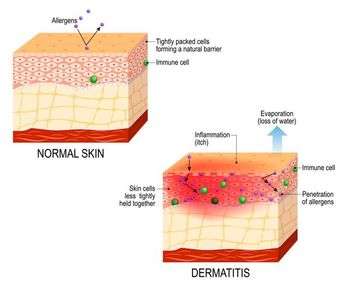
Benign Lichenoid Keratoses Mimicking Squamous and Basal Cell Carcinoma
This uncommon benign entity closely mimics squamous cell carcinoma, superficial basal cell carcinoma, and advanced actinic keratoses. The lichenoid keratosis does not transform into skin cancer.
During a periodic recall examination, a 63-year-old man was found to have an asymptomatic, erythematous, scaling plaque on the postero-lateral aspect of the left arm. Aside from a few routine actinic keratoses on the face, the rest of the cutaneous inspection was unremarkable.
Key point: Lesional morphology suggests in-situ squamous cell carcinoma, superficial basal cell carcinoma, or advanced actinic keratoses. A biopsy, however, revealed "benign lichenoid keratoses." This uncommon entity occurs in mature men and women, mostly on the upper extremities and shoulders. It may itch, sting, burn, or hurt. While the exact nature of benign lichenoid keratosis is uncertain, speculation suggests that it arises from a degenerating seborrheic keratosis or lentigo. The lichenoid keratosis does not transform into skin cancer.
Treatment: None is required, but liquid nitrogen cryosurgery may ablate objectionable lesions.
Note: This lesion closely mimics select neoplastic disorders of the skin. It is most often diagnosed when a biopsy is performed because other entities are suspected.
Newsletter
Enhance your clinical practice with the Patient Care newsletter, offering the latest evidence-based guidelines, diagnostic insights, and treatment strategies for primary care physicians.



























































































































































































































































































